Powet Alphabet: L is for Laputa
by Adam, filed in Movies, Powet Alphabet on Mar.20, 2010
Since the alphabet is the building block of our language, the Powet Alphabet is the building block of what makes us geeks.
Laputa is an island castle which floats in the sky. These days it’s most commonly thought of as the castle from the movie Laputa: Castle in the Sky by Hayao Miyazaki, but originally the story of Laputa was told as a minor part of the classic novel Gulliver’s Travels in which a similarly floating island carries the same name. There are similarities and differences between the two, both of which I’ll look at to try to give a complete picture of what Laputa really means.
So what is Gulliver’s Travels? It’s a fictional novel by Jonathan Swift from 1726, told in a narrative as if it were a retelling of real events from the travels of one Lemuel Gulliver. This story has been told time and time again, the most iconic image from it being that of a seemingly giant Gulliver being surrounded by the tiny people of Lilliput. Among the many places that Gulliver travels to in the book is the floating city of Laputa.
Laputa here isn’t really described so much as floating castle as much as a floating city. Though no definite reason for it’s name are given, two main theories are presented. The first is that Laputa comes from Lapuntuh, where lap mean high and that untuh means governor, so that Laputa is a reference to those who govern from up high, as the island itself is home to the monarchy which presides over it’s dominion below on the island of Balnibarbi. The alternative explanation, thought to be more likely by Gulliver, is that it’s from “quasi lap outed” where lap refers to the dancing of the sunbeams on the sea, and outed means wing.
Physically, the island’s base is a large perfect circle some 7837 yards in diameter, making the surface area exactly 10 000 acres. It is large enough to blot out the sun when hovering over areas, which is a method of intentionally inconveniencing unruly citizens below. This bottom surface is a regular plate of adamant, a fictitious substance, which is 200 yards thick, with more minerals on top of that. The island is surrounded with stairs all around, and it’s architecture it generally poor, avoiding right angles as the inhabitants have a contempt for practical geometry. Rain is collected in small groves leading to a reservoir in the middle where the water evaporates in the sunlight. There is a large circular chasm with a diameter of 50 yards named the astronomer’s cave. It goes 100 yards deep into the main slap of adamant and is used for astronomical observations with telescopes and all other manor of astronomical instruments.
The technological level of the people in Laputa is a bit higher than the rest of the world in the world of Astronomy. They have telescopes that are much superior to those in the rest of the world that allow them to have catalogued 10 000 stars, some three times the amount discovered in the rest of the world. They have similarly observed 93 comets and the moons of Mars, which would otherwise not be discovered until some 170 years later, 151 years after the book was written even. It wasn’t all laser beams and hover cars, as the attack people below simply by pelting them with stones.
Yes, they have a floating island, but this is itself not accomplished by anything too technologically advanced. Inside this large island is a massive magnetic load stone about 6 yards long and 3 years wide at it’s thickest. This stone is held in place by a thick axel in such a way that it can easily be turned with minimal force. Moving this loadstone’s orientation controls it’s movement. Putting it on one side makes Laputa rise by repulsing the stone from the ground, and the other attracts it to the ground lowering the island. Putting the stone at an angle allows it to move from side to side. This is not done in relation to the Earth’s magnetic field, but rather due to the magnetic properties of the island of Bainibarbi below who’s influence only allows the island to travel to a maximum height of 4 miles, and away from the island up to 6 leagues from the shore. While adapting these properties on this scale would certainly require quite a bit of engineering ingenuity by 1707 technology, it is not the result of some super science beyond even that of modern times.
The people of Laputa are a bizarre bunch. Politically, they are a monarchy presiding over the island of Balnibarby. The island will sometimes stop over towns and villages to get petitions from the subjects which are sometimes accompanied by offerings such as wine. While they have a great knowledge of math and music, they are generally a very clumsy, awkward people with little understanding of any other subject. When it comes to describing beauty they do so by referring to things in specific geometrical terms. Their clothes are decorated with figures of astronomy like suns, moons and stars, as well as musical instruments, both those known to the outside world like harps and guitars, but also some that are unique to Laputa. Their food is similarly cut into either specific geometric shapes, or made to resemble a musical instrument.
Their dialect sounds something like Italian, though the language is heavily tied to mathematics, science and music. They are bad reasoners and are contradictory even when it’s not right. They suffer from a lack of imagination, but enjoy news and political debate. With their advanced astronomy they become increasingly afraid that the world will end be it by having the Earth swallowed up by the Sun, having the Sun go out, or being destroyed by a comet. Because of this, they don’t sleep well or enjoy the pleasures of life. They are so often caught up in their own thoughts that they have something called a flapper follow them around and smack them with a type of flail in order to get their attention when it’s needed. Their women are so dissatisfied with their men that they yearn to leave the island for visits to the surface, but are rarely allowed to do so because they aren’t likely to return. With their men so distracted they’re able to get on with their lovers right in front of their husbands so long as they have papers or implements to distract them.
In Hayao Miyazaki’s film, Laputa: Castle in the Sky, Laputa is again a floating island, this time looking more like, as the title would suggest, a Castle. It has a large sphere at the bottom, and as it goes up there are three large circular walls each smaller as you go up, with many towers at the top. It has been 700 years since anyone had set foot on Laputa so everything is grown over. There is grass and flowers growing all over the rocks. Even some robot have moss growing on them while still being fully functional. A humungous tree grows at the center of the castle, reaching up past the highest point and with it’s root digging right down into the deep core at the bottom of the island known as the sacred area. Bizarre unknown species of animals populate the city, this includes the Fox-squirrels featured in the movie Nausicaa: Valley of the Wind.
Though it’s exterior looks medieval, Laputa hides highly sophisticated technology. For one, there are all the robots walking around, with long lasting power source and constructed of an unidentifiable substance they are one of the many signs that the people of Laputa had a very advanced technology. In the sacred area much of this technology can be seen, as the room rearranges itself at will and has the ability to project holograms. Laputa’s Thunder is what makes the island so seductive. From spikes which emerge from the bottom of the island this weapon attacks targets below creating an explosion similar to a nuclear detonation.
With all this high technology, how exactly does the castle float? This all seems to be thanks to a wonderful substance called Volucite. This is what Sheeta’s necklace is made of, and that amount allows her and Pazu to float. The Laputans knew how to make Volucite Crystal, and that this was used to make the islands float. The Guardian Crystal, Laputa’s power source, keeps the castle in the air, but how does it work? There is some insinuation that it’s properties could be magnetic in some way. Compasses, which rely on magnetics, stop functioning when close to Laputa. It is also mentioned that when Laputa passes over the mine near where Pazu lives, the rocks contained in it shift. Even with all the technology destroyed after the spell of destruction, Laputa remains afloat as the Guardian Crystal remains contained in the roots of the great tree.
The life of the inhabitants of Laputa is only revealed in a second hand manor, though the intro has a montage which shows a brief overview of their history. First we see them using simple machinery with gears and windmills, eventually doing some mining, presumably in the mine featured later in the film. Then come giant airships, not like anything the real world has ever seen, and eventually flying castles, shown here with propellers at the base insinuating an alternate way of lifting the island than the Volucite they were likely mining earlier in the montage. Without any specifics, a cataclysm destroys the floating islands, leaving the people to escape back to the ground.
The history of the ancient civilization
We later fill in some of the blanks learning that the main character Sheeta’s full name is actual Lucite Toelle Ur Laputa, a name indicating that she is descended from the Queen of Laputa, and the villain Muska is Romuska Palo Ur Laputa, and he is also descended from this same royalty. Muska explains that the ancient empire once ruled the Earth. Sheeta’s family passed down a song explaining why the floating castle was abandoned:
Put down your root in the soil.
Let us live together with the wind.
Pass the winter with the seeds.
Sing in the spring with the birds.
Basically, the whole idea of this story being that people should not live apart from the Earth, no matter how many awesome robots and cool looking floating castles they have.
The timeline of the film is not an obvious one. Is it our past, our future, or something else entirely? Trying to determine the actual date isn’t terribly complicated. Pazu’s father’s photo of Laputa is dated 1868, so the events of the film would take place some time after that. Technology is somewhat consistent of the time, with early cars, first invented in 1885, and use of simple things like steam, telegraphs and pistols. Of course, we also have completely unseen and unheard of aircrafts, even though the events would take place before the invention of the air plane, and weird tanks on railroad tracks. These are more like thought exercises in what could have been, rather that what actually happened, insinuating this is likely some sort of alternate history.
Dating the time of the ancient civilization is a bit harder. Though Laputa is mentioned to have been without a King for 700 years, this only explains how long it’s been abandoned, and does not suggest how long ago it existed for or the origins of it’s civilization. Muska mentions that the weapon that Laputa is equipped with was the heavenly fire that destroyed Sodom and Gomorrah, a city destroyed because the people had butt sex. This is Old Testament shit, which is written anytime between 1400 BC and 400 BC. Similarly it is said to be Ramayana’s Arrow of India which is an epic Indian story written around 400 BC. So if Laputa was abandoned around the late 1100s, this would insinuate it was around for at the very least 1500 years, probably much longer, in a fairly technologically stable time as it’s ultimate weapon was already around. This doesn’t seem terribly likely, especially when considering those stories aren’t actually true. It could either be Muska being simply mistaken or a plot hole.
To add further confusion to the question of when and where the movie takes place, after all insinuation that this is some form of Earth, we see Laputa flying high over the Earth while a planet with a ring appears in the background. Is this another planet, or perhaps insinuation that this is actually some distant future where the Moon has a space ring from another, or possibly the same, lost civilization?
Now that we’ve elaborately explained both version of Laputa, what do they have in common? Pazu makes the statement that there was a Laputa in Gulliver’s Travels but that Swift (author Jonathan Swift) made it up. This insinuates we are not to actually believe Laputa in the book was based on the real thing, or that the world is canon with the events of the fictitious book. Still, we have a lot of similarities.
The basic shape can’t be ignored. Both are around giant islands filled with buildings not unlike a castle. Though no specific metric is given for the island in the film, both are so large as they can cast a large shadow on the ground below. The method of keeping the island afloat is somewhat similar. The magnetism described in the book can be explained by some of the effects of Laputa in the movie, but ultimately it is not tied to any particular magnetic island below insinuating there is likely more to this effect, perhaps that it works off the actual magnetic field of the Earth. Politically, both societies have a Monarchy, though in the book they Govern the island below, while in the movie the entire society seems to be living in a large number of these islands. In Gulliver’s Travels their language is described as sounded like Italian. Without any specific mention the sound of the dialect heard in the movie has an Italian sound to it as well.
Despite a few similarities, the differences seem much more pronounced. Without reiterating every thing mentioned previously, the technological differences are quite staggering. In the book, aside from some more sophisticated astronomical knowledge, their actual technology is not advanced past that of the world they float above at all. The movie details a much older civilization with a much more advanced technology of robots, holograms and weapons of mass destruction. Rather than controlling movement through positioning of a load stone, the civilization from the film instead have advanced computers at their disposal. By this same token the people themselves would need to be drastically different. While not much of the people from the film is shown, they would never have attained the same level of advancement if they were the constantly distracted mathematicians from the novel.
While Gulliver’s Travels was surely a loose inspiration for the movie, the similarities are fairly superficial upon close examination.
Laputa, as depicted in the film, was a likely inspiration for the video game Crystalis for the Nintendo Entertainment System, originally God Slayer in Japan on the Famicom, which did not credit the film. The game features a lost civilization that once had a floating tower with a powerful weapon. The tower lacks the medieval feel of the one that inspired it but it is home to a bunch of robots. The game also takes inspiration from another Hayao Miyazaki animated film, Nausicaa of the Valley of the Wind, with a village in a valley of the wind complete with windmills and a forest filled with giant insects, poisonous gas, and a boss that looks a lot like and Ohm. This really is an amazing game, but it’s a shameless rip off.
Ultimately, the best version of Laputa is the spanish meaning of “la puta” which means, “the whore”. Sorry, pictures of that one…
If you’re interested in reading Gulliver’s Travels, you can do so for free because it’s public domain. Check it out at Project Gutenberg. The parts about Laputa are in Part III Chapter I.


 PS3
PS3
 Famicom Dojo
Famicom Dojo KEEP PLAYING
KEEP PLAYING KEEP PLAYING: Rewind
KEEP PLAYING: Rewind Powet Toys
Powet Toys Powetcast
Powetcast Hitchhiker's Guide POWETcast
Hitchhiker's Guide POWETcast
















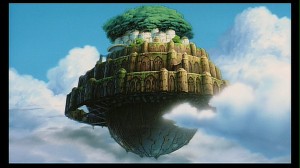
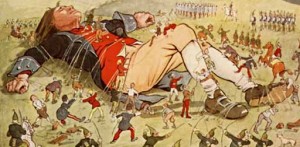

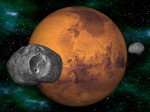
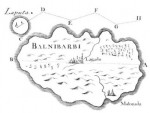

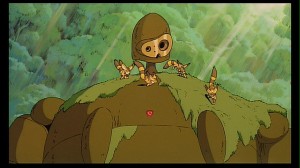
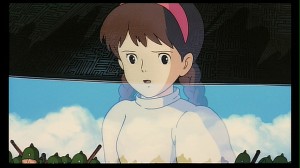
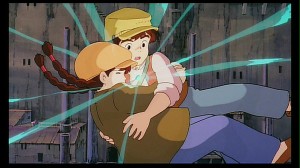

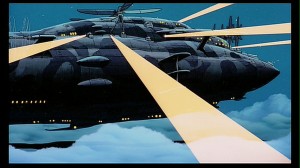
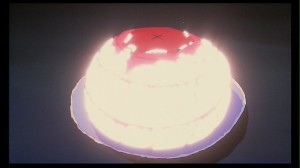
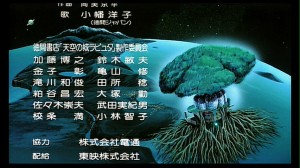
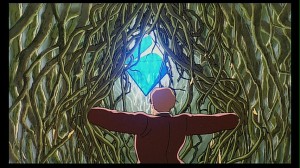
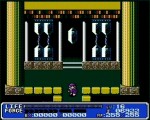
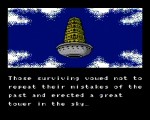
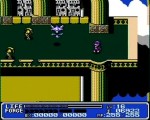
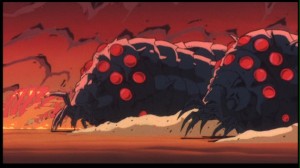
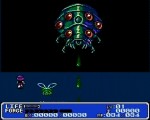
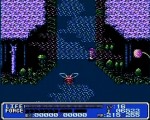

Pingback: Powetcast Episode 30: PAX East 2010 - POWET.TV